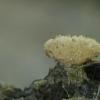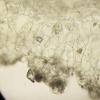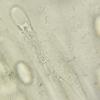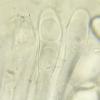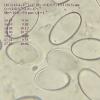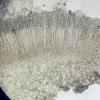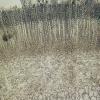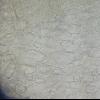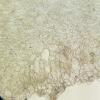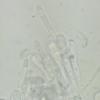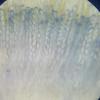
14-11-2025 16:26
 Marian Jagers
Marian Jagers
Hello everyone, On dead wood of Cytisus scoparius

14-11-2025 18:31
 Lothar Krieglsteiner
Lothar Krieglsteiner
Hello,can somebody provide me with a file of:Rothe

12-11-2025 09:25
 Viktorie Halasu
Viktorie Halasu
Hello, I need help with a pale terrestric Pseudom

11-11-2025 20:16
Bohan JiaHi, lastly I have found these tiny yellow decayin

09-11-2025 13:20
Hello.A tiny ascomycete, appearing as erupting gra

08-11-2025 00:29
 Francois Guay
Francois Guay
I found this species in Quebec, Canada, on herbace
A small Peziza from the ground.
Mirek Gryc,
12-06-2021 16:38
Hello everyone
A colleague sent me this Peziza in a living state. Ascomata diameter about 4 mm. It has a very characteristic layer, especially bottom. I present in the pictures. I have never seen a Peziza such construction.
Spores smooth, I checked in Cotton Blue
Each hint is welcome.
I can not find my name for her.
greetings
Mirek
Nicolas VAN VOOREN,
14-06-2021 12:05

Re : A small Peziza from the ground.
The type of amyloid reaction is typical of the Peziza-core group (Peziza s. str.), but hard to say anuthing with only one apothecium.
Mirek Gryc,
14-06-2021 14:29
Re : A small Peziza from the ground.
Hi Nicolas
A few days I kept the living Ascomata to be sure that it is mature.
I am aware that the specification of the species in this group of peziza is very difficult, especially if one small Ascomat has.
As I mentioned earlier, I am wondering very interesting textures. I have never met such textures in the genus of peziza.
Re-research confirm their interesting construction.
In addition, I observed that Parphyses are densely septate, sometimes, lower member slightly expanded.
Again, I also measured the spores, the biggest dimensions were achieved:
Me = 18.5 × 10.5 ?m; QE = 1.8
The reaction to iodine in the more mature ascomata is much more deep, reaching the basics asci (photo).
Thank you for the previous comment.
greetings
Mirek
A few days I kept the living Ascomata to be sure that it is mature.
I am aware that the specification of the species in this group of peziza is very difficult, especially if one small Ascomat has.
As I mentioned earlier, I am wondering very interesting textures. I have never met such textures in the genus of peziza.
Re-research confirm their interesting construction.
In addition, I observed that Parphyses are densely septate, sometimes, lower member slightly expanded.
Again, I also measured the spores, the biggest dimensions were achieved:
Me = 18.5 × 10.5 ?m; QE = 1.8
The reaction to iodine in the more mature ascomata is much more deep, reaching the basics asci (photo).
Thank you for the previous comment.
greetings
Mirek

